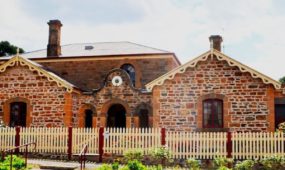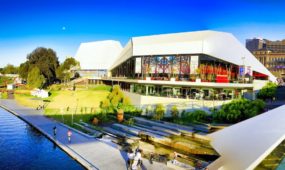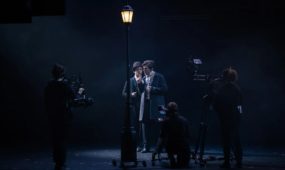Behind the Seams
Arts
IT’s not just the actors who bring characters to life, but the costumes. State Theatre Company of South Australia costume designer Ailsa Paterson talks us through the process for their current play The Importance of Being Earnest.

Sign up to receive notifications about new stories in this category.
Thank you for subscribing to story notifications.
TheatreAilsa
DesignFirst off, Ailsa discusses artistic director Geordie Brookman’s vision for the look of the play. She then begins drawing her ideas, from the overall look to small details, and creates a colour story and silhouette for each character.
“For example, Lady Bracknell is statuesque and has quite sharp lines on her clothing, as opposed to Cecily, who has really soft, feminine lines. At that time there were two styles for women, one was a quite masculine tailoring and the other one was called lingerie dress, which was a lot softer and embellished, so there’s a nice contrast in those looks and we’ve managed to get both in the play.”
Everything goes into a folder for each character, which Ailsa gradually refines to the core ideas. From this, she produces the final drawings for the final costume presentation – which she finds both exciting and nerve-wracking. If all goes well, she then presents the drawings to the costume makers.
“If they get excited and say they really want to make that, you know you’ve got it right,” she says.
Development
Who will be playing the characters also comes into consideration.
“I might have only seen a headshot of the actor and until you actually meet them and talk about their vision for the character, and also see what’s going to fit them… all of those things add a whole other element.”
The Importance of Being Earnest has seven actors and nine characters, and all of the female characters’ costumes have been made from scratch.
“It’s a huge undertaking because they have several changes, it’s not just a gown each. Plus there’s capes, hats, wigs…”
When the costume changes occur also affect the design – if it’s at interval, there’s more time to get changed, but mid-scene requires a quicker change.
CreationThe next stage is to make the toile – the costumes made in plain linen to test the patterns. The actors are also fitted to these, and only then are the costumes made in the final fabrics.
“As I see the garment emerging, when it starts to be realised in real fabric, that’s so exciting. And it’s interesting watching the actors take themselves in when they first put the costume on. With the restrictions of corsets, enormous sleeves and a skirt with a train, you have to turn in a certain way; they all practice sitting down in the fitting.”
Ta-da!AilsaDeBiasicolours
“I’m always hugely nervous on opening night whenever there’s a new costume about to come on.”
Jump to next article



